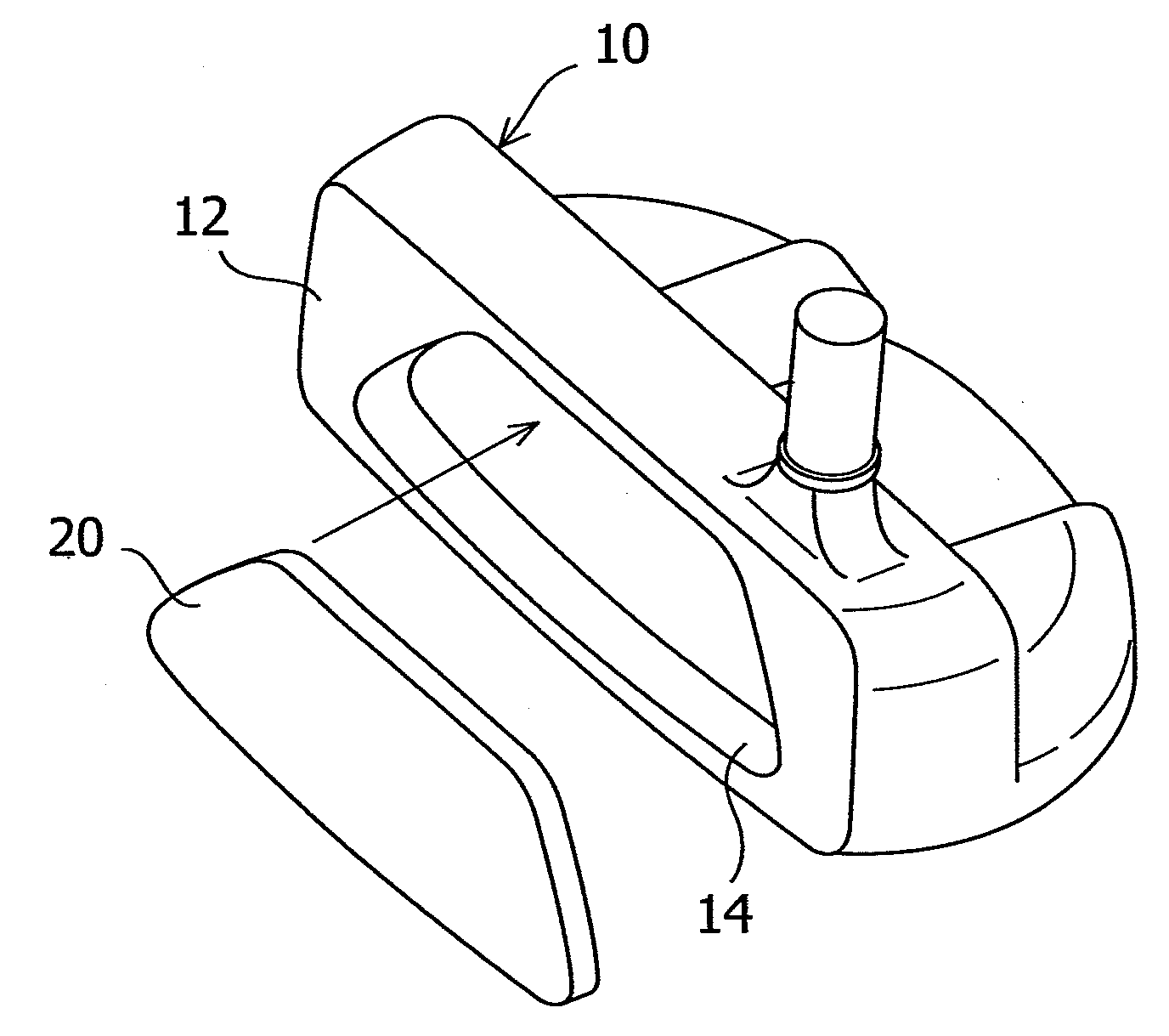Putter head
a technology of putter head and putter head, which is applied in the field of putter head, can solve the problems of low smash factor, difficult to provide an appropriate putter to a golfer, so as to reduce the smash factor, increase the smash factor, and improve the effect of hardness
- Summary
- Abstract
- Description
- Claims
- Application Information
AI Technical Summary
Benefits of technology
Problems solved by technology
Method used
Image
Examples
examples
[0059]First, face inserts of a single-layer structure were constructed using six types of polymer with different D hardness values (Examples 1 to 6). Putter heads were constructed by mounting the face inserts in head bodies, and then putters were constructed using the putter heads. The face inserts measured 20 mm high, 50 mm wide, and 4 mm thick and weighed 4 g. The head bodies were made of aluminum alloy. The putter heads weighed 340 g each. Shafts were made of steel, and clubs weighed 505 g each.
[0060]In Table 1, “Polyurethane” indicates a thermoplastic polyurethane elastomer, “Polyamide” indicates a thermoplastic polyamide elastomer, and “Polyester” indicates a thermoplastic polyester elastomer.
TABLE 1Initial speedPolymer nameD hardness(m / s)Smash factorExample 1Polyurethane A63.52.7401.522Example 2Polyurethane B40.82.7341.519Example 3Polyurethane C52.22.7301.517Example 4Polyamide A58.52.7831.546Example 5Polyamide B39.82.7501.528Example 6Polyester35.62.7851.547
[0061]Then, by putti...
PUM
 Login to View More
Login to View More Abstract
Description
Claims
Application Information
 Login to View More
Login to View More - R&D
- Intellectual Property
- Life Sciences
- Materials
- Tech Scout
- Unparalleled Data Quality
- Higher Quality Content
- 60% Fewer Hallucinations
Browse by: Latest US Patents, China's latest patents, Technical Efficacy Thesaurus, Application Domain, Technology Topic, Popular Technical Reports.
© 2025 PatSnap. All rights reserved.Legal|Privacy policy|Modern Slavery Act Transparency Statement|Sitemap|About US| Contact US: help@patsnap.com



